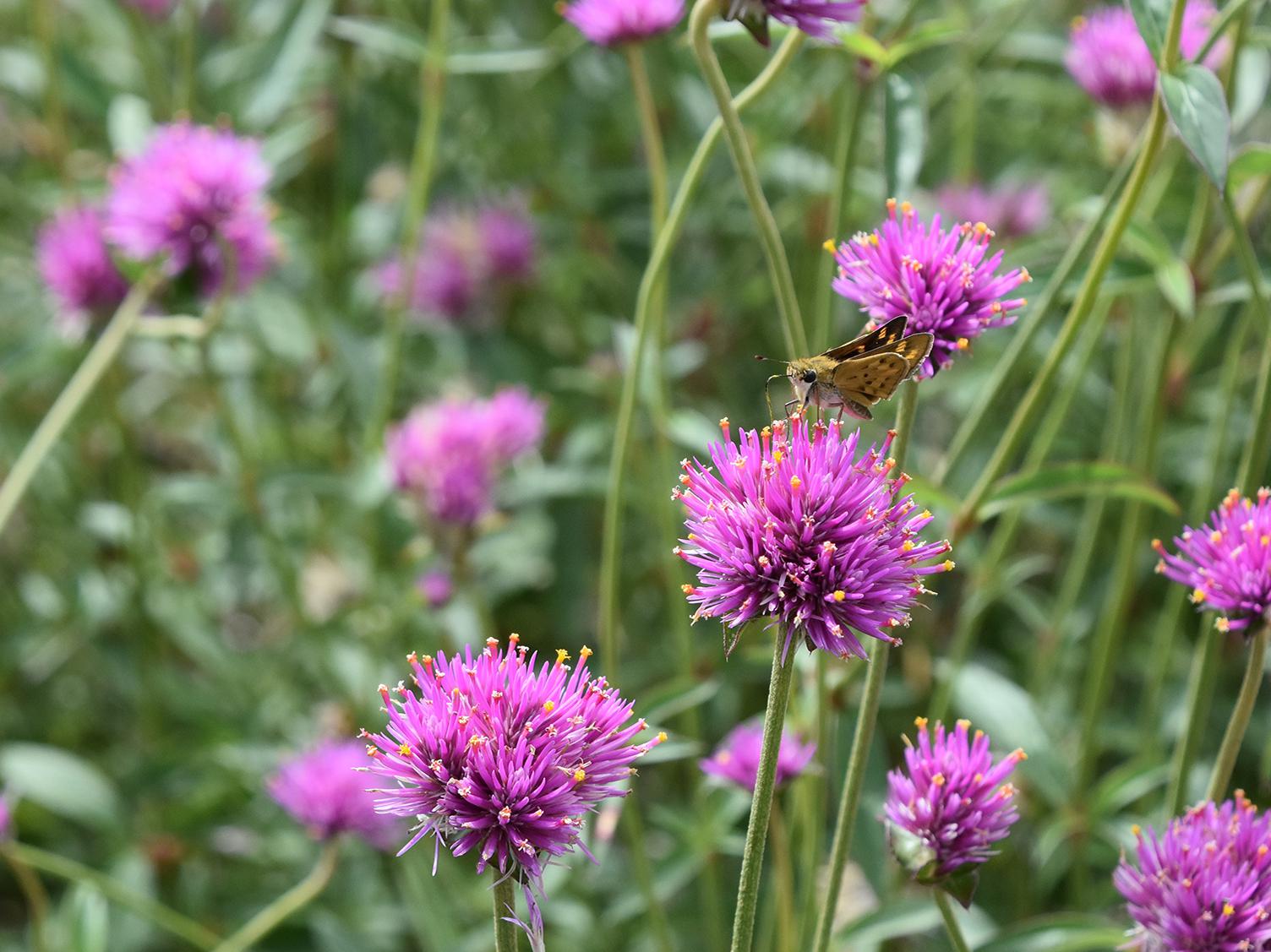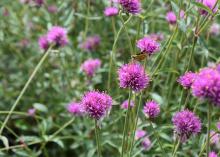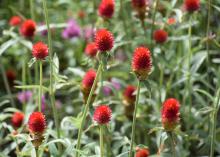Information Possibly Outdated
The information presented on this page was originally released on August 21, 2017. It may not be outdated, but please search our site for more current information. If you plan to quote or reference this information in a publication, please check with the Extension specialist or author before proceeding.
Gomphrena beauties defy summer weather
Last week, it was extremely hot in the trial gardens at the South Mississippi Branch Station in Poplarville while we were shooting new TV segments of Southern Gardening. While my crew and I were literally wilting in the heat and humidity, there was one group of plants that seemed to be taunting Mother Nature to bring it on.
That plant was gomphrena, and I'd hate to meet it in a dark alley.
Gomphrena is a tough plant that tolerates the combination of summer heat and humidity and keeps right on blooming. Sometimes called globe amaranth, the gomphrena likes it hot -- really hot, like it is in our Mississippi gardens and landscapes.
I love to share the story that says gomphrena is the only plant that will grow around the Gates of Hades. Now to continue that story, I like to tell fellow gardeners that gomphrenas certainly grow like heck!
What makes the gomphrena one of my favorite hot weather, flowering annuals is that it blooms from late spring to the last hard frost in the fall. In south Mississippi, that frost may not show up until January, so I may get to enjoy gomphrena blooms for eight months or more. The fact that they have few serious garden pests is another plus.
The flowers are clover-like, everlasting and similar to straw in texture. The flower heads are actually bracts, which are leaves resembling petals. The small flowers are inconspicuous, only noticeable when the yellow stamens poke out. Flower colors range from white to purple and red.
Gomphrena’s strong garden performance is exemplified by it having been chosen as a Mississippi Medallion winner twice in the past nine years.
The first selection was All Around Purple in 2008, followed by Fireworks in 2010. And true to its name, this selection is as beautiful as any fireworks display I’ve ever seen. The hot-pink flowers almost seem iridescent, and the little, yellow tips seem to capture the essence of a celebratory explosion. Fireworks is a big plant, growing up to 4 feet tall and wide, so plan your landscape bed accordingly.
Another selection always welcome in my garden is Strawberry Fields, the very first red-flowered selection of gomphrena. The flower heads resemble blazing fireballs, and they are displayed on sturdy stems that bob around in a gentle breeze.
Other garden-worthy series are the Gnome and Ping Pong. Smaller in stature than other gomphrenas, these selections are perfect for smaller planting areas in the garden.
Be sure to plant in the full sun. Gomphrenas tolerate partial shade, but the best flowering show requires higher light levels. As long as the planting bed is well drained, your plants will thrive. In fact, once established in the spring, gomphrenas actually become somewhat drought tolerant, but remember to water them during extended dry periods.
Gomphrena also makes a good dried flower and is classified as an everlasting. Tie flower stems in bunches and hang them upside down to dry in an airy room out of direct light. The flowers retain their color and are great additions to craft projects and dried flower arrangements.






